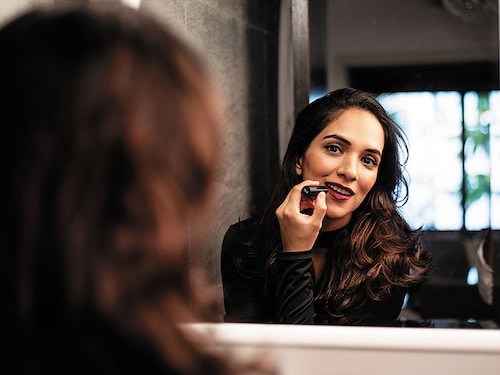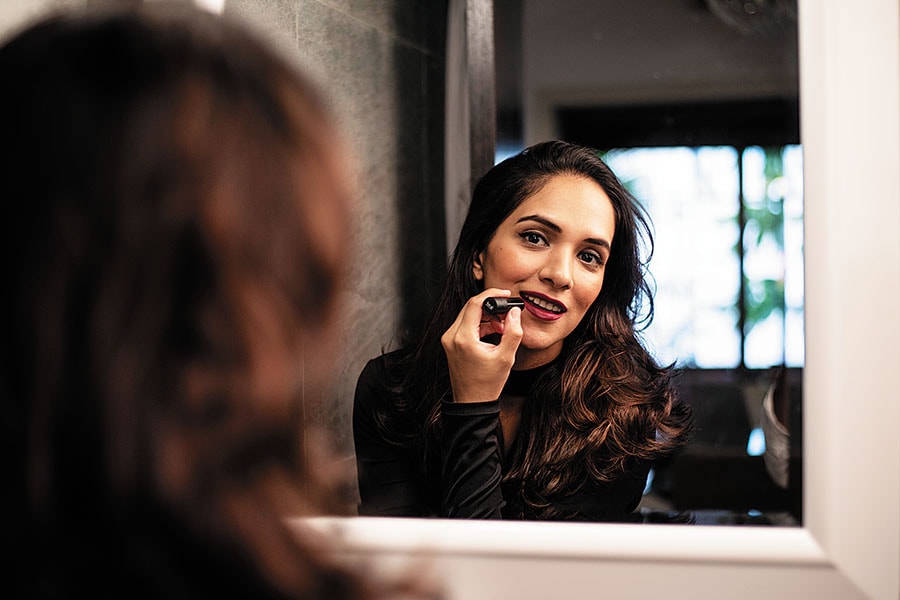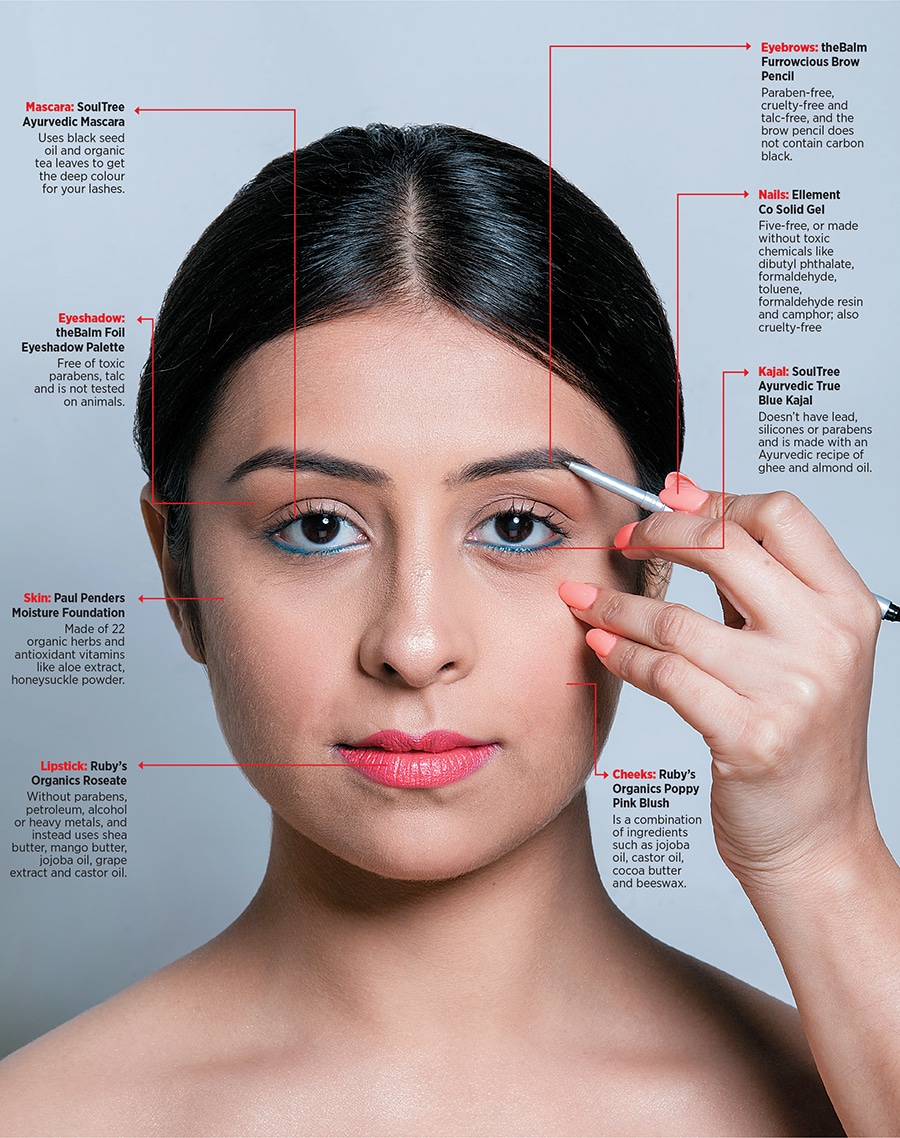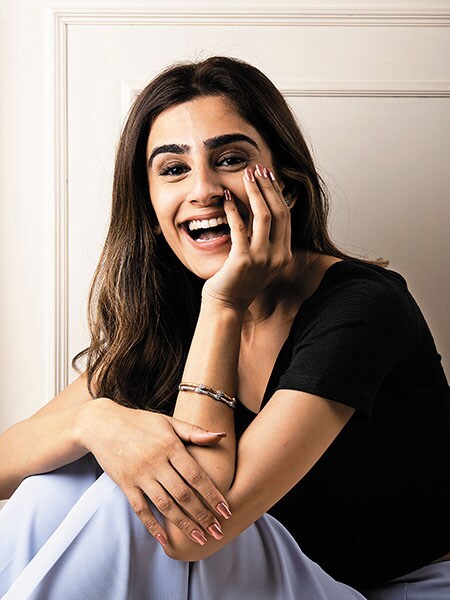How green is your lipstick?
Eco-conscious consumers in India are driving growth in makeup that is natural, organic or cruelty-free


 Rubeina Karachiwalla of Ruby’s Organics
Rubeina Karachiwalla of Ruby’s Organics
It’s no secret that ugly truths hide behind the gloss of the beauty industry. A third of global landfills are choked with plastic containers, a common packaging material for beauty products mercury, parabens and other chemicals used in makeup are known to trigger the growth of cancer cells chemicals such as P-phenylenediamine (found in lipsticks) and dibutyl phthalate (used in nail polish) are heavy pollutants. And that’s not all, of course.
With greater purchasing power, more women joining the workforce in India, and because of a constant need to look camera-ready, India’s cosmetics industry is growing rapidly. According to market research firm Redseer Consulting, it has an overall market standing of $6.5 billion and is expected to grow to about $20 billion by 2025 with a CAGR of 25 percent. In comparison, the global cosmetics market is growing at 4.3 percent CAGR and will reach about $450 billion by 2025. This means that, by 2025, India will constitute 5 percent of the total global cosmetics market, and become one of the top 5 global markets by revenue.
The good news, however, is that more women are becoming aware of the possible perils of using toxic chemicals, for both their own skin as well as the environment. Redseer’s report also says that coupled with multiple other factors, herbal cosmetics products are growing—this segment alone is expected to grow at 15 percent, as more consumers switch to ‘safer’ products.
If you paint by numbers, the potential is huge. But while natural and organic skincare has seen several players such as Forest Essentials, Kama Ayurveda and Patanjali make a mark, the natural makeup space is still an open field—one that is seeing a serious bout of action now.

“Product development for makeup is definitely more difficult than that for skincare, and is often outsourced,” explains Vishal Bhandari, founder and CEO of SoulTree, an organic ayurvedic beauty brand that was founded in the 1990s, but introduced a sustainable makeup range only in 2013. “Makeup has an aesthetic element that is more visible than, say, shampoo, which makes customer expectations very high and often hard to meet.”
SoulTree now stocks a range of ayurvedic kajals, lipsticks, mascara, lip gloss and, just this month, introduced BB creams too. “Makeup is seen as decorative and artificial,” adds Bhandari. “We found that using ayurvedic principles can, in fact, benefit your skin. For instance, our lipsticks are made of ghee, which helps with chapped lips.”
Similarly, when former publicist Rubeina Karachiwalla, a self-confessed “makeup addict”, began to carefully read the labels of existing beauty brands in India, she was left disturbed, and decided to start her own organic makeup line, which hit the markets in March 2017. “I was always very conscious of what I exposed my body to, in terms of food, skincare and makeup,” she says. “With no background in chemistry or cosmetology, I dived into heavy research, and hustled for three years before we had our market launch.”
Her objective, she adds, is to introduce the idea of clean beauty in India using natural ingredients that are also efficient. “When it sits on your face, it should be doing something,” she says. So her brand Ruby’s Organics offers products described as “skincare at the core, tinted with mineral colours”. So while you wear the crème highlighter, the composition including jojoba oil, shea butter, beeswax and castor oil helps heal your skin, while giving it the illuminating glow of the highlighter.
Ruby’s Organics now retails collections of concealer, foundation, eyeshadow, highlighter, blush, lipsticks and their newest products, dual eyeliner-kohl pencils and kohl-brow fillers. The makeup is organic, paraben-free, 100 percent vegetarian and against animal testing.
“When we began to market ourselves, we felt a sense of relief from people, because most organic beauty brands only extended their makeup range to kajal and lipstick,” says Karachiwalla. “Our products are aimed at well-travelled educated young women aged 20 to 40. They are not meant for high-gloss magazine shoots, but for real, everyday women who want a solid product that is both effective and guilt-free.” The base of all of Karachiwalla’s products is the same—a mix of butters, oils, clays and waxes. All ingredients are sourced in India, and the products are manufactured and packaged in the country too.
Ruby’s Organics claims to be growing between 10 and 15 percent per month, and introduces new products every other month. Next on the agenda is compact and loose powders, but their bestsellers remain their lipsticks. They retail via ecommerce websites such as Nykaa and Scootsy, and are available at Nykaa’s offline stores too.

Minash Bablani of Ellement Co
Mumbai-based travel executive Michelle Cordo, 31, is a loyal customer after discovering Ruby’s Organics at a local exhibition, where she tried the lipstick. “I never used to wear a lot of makeup as it made my skin uncomfortable, itchy and dry,” she says. “I liked the colour and it didn’t come off easily. I started wearing it every day, and ended up buying almost all the shades. I use the other products too, and it never feels heavy, unlike chemical cosmetics.”
Another young brand is Ellement Co. Less than a year old, it was founded by Minash Bablani. Ellement Co is a gifting company for the modern woman, with products spanning cheeky sweatshirts, baby apparel and bath salts its flagship line is a range of nailcare products that are ‘five-free’ (made without dibutyl phthalate (DBP), formaldehyde, toluene, formaldehyde resin, camphor) and cruelty-free.
“More and more people are seeking products that are not tested on animals and are free of toxins,” says Bablani. “For instance, pregnant women often can’t use regular nail polish. Our unique formula, manufactured in Germany, gives you gel nails without a base coat, which often dehydrates and yellows your nail bed.”
Moreover, while most foreign brands are made for colder climates, Ellement Co’s nail polish is tested for tropical weather and oilier nailbeds. They are tripling sales each quarter, and introducing new colours every four to five months. Their main sales channels are ecommerce and salons. At ₹1,250 for a 100-ml bottle, the nail polish is priced at a premium.
“India is a discount-driven market and it definitely is a challenge to convince customers that the product is worth its price,” says Bablani. “While everyone wants nail art, few are concerned about nail hygiene. But it definitely is a growing segment. Communication is key, and once customers know that better alternatives are available, they’ll keep coming back. They would rather not harm the environment, animals and themselves.”
Foreign Interest
International beauty brands in the organic and natural space are also seeking to cash in on India’s huge potential for such products. For instance, theBalm, an American brand known by its quirky packaging and its cruelty-free products that are also free of paraben and talc, launched in India in September. Another American brand, Paul Penders, which uses no chemicals and animal testing, came to India with its makeup range about a year ago.
“In recent years, the Indian beauty market has evolved tremendously,” says Sargam Dhawan, CEO and director, Paul Penders Botanicals, India. “We have seen a rising trend for natural and organic beauty products here, which makes international brands view India as their next entry hub. This is a result of changing lifestyles and global beauty trends, but also a call back to tradition. India has always seen the co-existence of tradition with modernity.”
Paul Penders’ makeup products contain LevensEssentie Gold (made from 22 herbs) mixed in a base of plant waxes, plant oils and vitamins with organic dyes. They will soon add botanical eye shadow, blush and liquid lipstick to their range. “India’s makeup market is flourishing, and the challenge now is to offer affordable cosmetics with quality ingredients,” says Varun Gupta, founder of Leap India, the India partner for theBalm. “Additionally, brands need to understand the needs of the Indian skin tone, and how geographical factors contribute to the use and application of different products.”
Name Game
According to Shahnaz Husain, a veteran in ayurvedic beauty, one of the first challenges in the makeup industry is the ambiguity in nomenclature. “Organic, natural and herbal are words that are used interchangeably, although they don’t mean the same thing,” she says. “It’s difficult for consumers to be sure that the product that they are purchasing is, in fact, checking the boxes they’d like it to.”
So, despite its name, Ruby’s Organics doesn’t claim to be 100 percent organic. “We also use minerals and other natural ingredients,” says Karachiwalla. “This makes us 100 percent natural, but not 100 percent organic. These words are often misused, and customers must learn to vet each claim.”
Similarly, claims of sustainability must extend beyond the ingredients used. “It’s difficult to bring all stakeholders on the same platform for complete sustainability,” says Bhandari of SoulTree. “In terms of waste management and packaging, for instance, India lags far behind.”
Being environmentally conscious also limits the product range, as certain colours and textures cannot be achieved without chemicals. For instance, Karachiwalla says, liquid lipsticks and eye products are a challenge to make. Bhandari adds that conscious brands are competing with regular makeup brands, and consumers use the same standards of benchmarking for them.
“Making natural cosmetics abound with difficulties, stemming from the fact that beauty products do not exist in nature,” says Dhawan of Paul Penders. “Ingredients are extracted from natural sources, and the processes require significant chemical synthesis. Even if you find naturally extracted ingredients, you will still have the problem of keeping them free from contamination and microbial growth. Creating these products requires careful consideration of what consumers believe to be natural, and then making products that match their standards.
First Published: Sep 15, 2018, 07:37
Subscribe Now